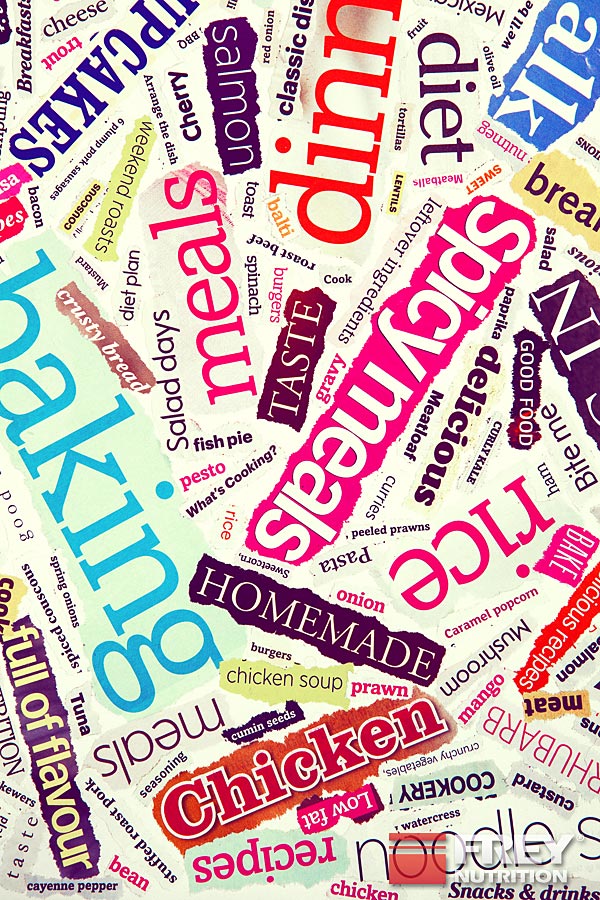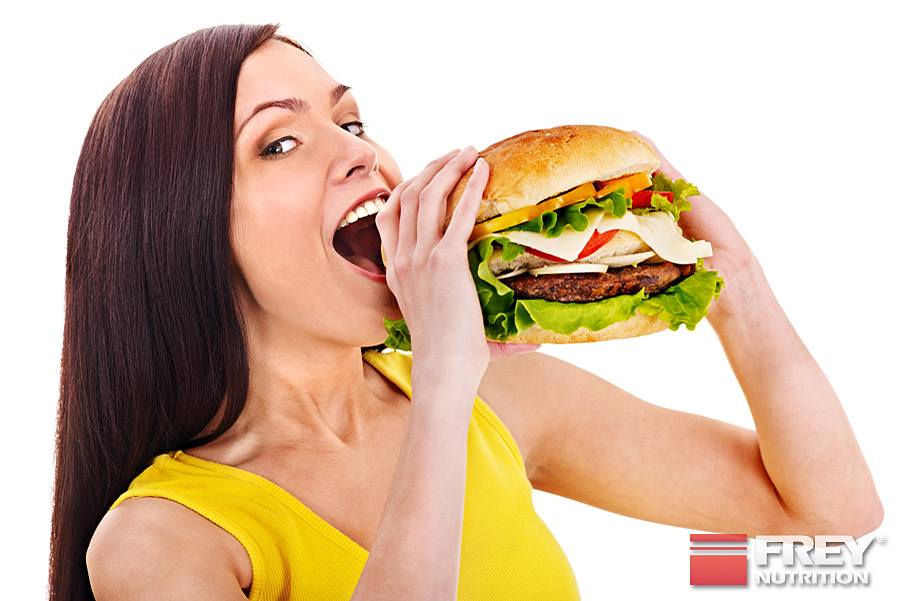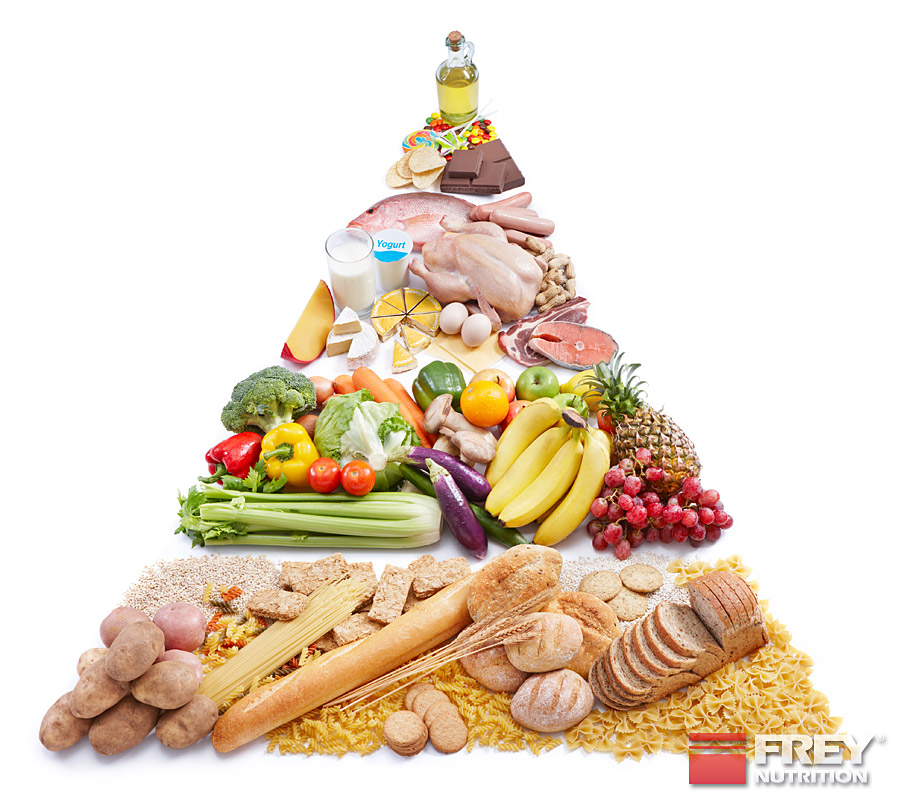FINDING YOUR WAY IN THE DIET JUNGLE
There are countless diets and thousands of nutritional recommendations. Finding your way through the flood of diets and choosing one that makes sense for you is often not an easy task. However, we will help you and would like to use the following information to help you make the right choice!
Numerous diets are published in print media and sold in the magazines they are based on. These extreme diets rarely aim to provide an effective and long-term, sensible diet. Rather, they are intended to boost sales of the magazines. The more extreme and unusual a diet, the more likely it is to appeal to dieters. They often make the false assumption that exotic, extreme diets must work.
However, most of these radical diets pay little attention to the nutritional principles of healthy eating and often only work in the short term, if at all. In the long term, however, they and their often highly praised results fall by the wayside. Likewise, diets that are supposed to lead to the dream body in the shortest possible time are neither advisable nor healthy. In the worst cases, such radical diets can have dangerous and life-threatening consequences.
We want to help you through the diet jungle by using this nutrition section to explain the most common types of diet and point out the advantages and disadvantages of each. There are countless types of diet and nutritional concepts, and explaining them all here would go beyond the scope of this article. This is why this section only covers the most well-known types of diet.
"THE FASTER A DIET LEADS TO WEIGHT LOSS, THE GREATER THE RISK THAT THE LOST WEIGHT WILL BE GAINED AGAIN AFTER THE DIET." (QUOTE: A. FREY
THE BUILDING DIET
The primary goal of the building diet, also known in technical jargon as the mass phase, is maximum weight gain. The secondary goal is a constant body fat percentage. At the end of an ideal building phase, a (more or less) fat-free increase in muscle mass should be seen as a success in the mirror and on the scales. However, pursuing both goals in parallel is very difficult and is hardly feasible in reality, since a positive energy balance must be created in order to gain weight, which is often accompanied by an increase in fat when building muscle mass.
Nevertheless, the relationship between muscle building on the one hand and fat gain on the other can be influenced positively by a disciplined and targeted diet. Competitive athletes and those who earn their living through sport should be role models and "actually" do everything right, or so you would think. However, the nutritional practices of many professional bodybuilders during the building phases are often completely unfounded. The downright "bulking" by eating sweets, cakes and junk food, supposedly "free pass" with the aim of maximum weight gain at any price, is neither sensible nor is it a health-related approach. Shortly before a diet, at the latest, the aforementioned "mass monsters" often ask themselves whether their approach was sensible, since the majority of the kilos gained consist of fat mass and have to be laboriously slimmed down again.
The qualitative, slow and constant muscle gain should therefore always be the focus of the building diet. This is recommended not only from an aesthetic point of view, but above all from a health point of view. The weight gain should therefore be between 300 and 700 g per week and not exceed a maximum of 1 kg.
Five meals evenly distributed throughout the day form the nutritional basis of the building diet. This ensures a constant and even insulin release. The aim is to make optimal use of the anabolic properties of insulin for muscle building, while at the same time avoiding the fat-storing disadvantages of a meal that is too large and the associated strong insulin production. The nutrient composition should consist of the following proportions:
50 % CARBOHYDRATES
30 % PROTEIN
20 % FAT
The nutritional recommendations of the building diet consist primarily of complex carbohydrates, high-quality biological proteins and polyunsaturated fats in the form of vegetable oils.
CONCLUSION: RECOMMENDED

The building diet is considered a sensible form of diet with its goal of increasing muscle mass and weight. It is based on nutritional principles and is a popular and easy-to-follow diet in practice. Due to the sometimes very pronounced positive calorie balance, particular attention should be paid to fat gain in order to counteract this by reducing carbohydrates if necessary. In summary, the building diet is a very sensible diet, so thumbs up!
THE ANABOLIC DIET | ATKINS DIET | KETOGENIC DIET
The anabolic diet involves the complete elimination of carbohydrates from the diet, with the aim of using mainly fats as an energy source. Named after its inventor Dr. Robert Atkins The anabolic diet is also known as the Atkins diet or the ketogenic diet. The latter is due to the ketone bodies formed by the withdrawal of carbohydrates. The aim of this diet is to reduce body fat while maintaining muscle mass. The anabolic diet blames insulin for fat buildup and aims to prevent its release by reducing the carbohydrate content to less than 20 g per day. Due to the withdrawal of carbohydrates, the organism goes into ketosis after a few days and begins to produce ketone bodies, which are used as energy. Unfortunately, the Atkins diet neglects the fact that insulin is one of the most anabolic hormones in our body, fulfils important functions and plays a crucial role in building muscle substance. Rather than completely suppressing insulin release, the focus should be on a targeted release of insulin (especially in the morning and after training). This way, the advantages of the hormone can be used and the disadvantages eliminated. This approach is one of the principles of the pendulum diet, which will be discussed in detail in the next section.
According to the Anabolic Diet, the reduction in carbohydrates must be compensated for by increasing the protein and, above all, fat content of the diet. And this is exactly where most problems begin, as high fat intake can impair digestive function, which often leads to gastrointestinal problems.
IN THE LAST WEEKS OF COMPETITION PREPARATION THE ANABOLIC DIET CAN BE BENEFICIAL.
The theoretical basis of the Atkins diet may be correct, because excessive insulin production does indeed promote fat storage. However, this completely ignores the fact that insulin has vital functions, is one of the most important hormones in our body and is not secreted by our body without reason.
Our brain in particular depends on a minimum daily amount of 60 g of carbohydrates to function properly. If you do not consume this amount, which is required during an anabolic diet, a deficit occurs. Side effects such as dizziness, loss of concentration and reduced performance can result. Particularly in large and heavy athletes, the drastic reduction in carbohydrates is often accompanied by a significant loss of performance.
The one-sided diet and the complete avoidance of fruit and vegetables often lead to a lack of essential vitamins and minerals. The anabolic diet only has advantages in the last two weeks of immediate competition preparation. In this phase, the focus is on the targeted manipulation of the nutrient and fluid balance. First, carbohydrates are reduced to 0 g per day for around 7 to 10 days, in order to then add them back in as a surplus. This supercompensation is intended to achieve muscles that are as fat and water-free as possible and filled with glycogen, which works surprisingly well in practice if the process is planned.
CONCLUSION: CONDITIONALLY RECOMMENDED

Due to the very one-sided diet, the anabolic diet is difficult to follow long-term. The drastic withdrawal of carbohydrates can lead to a drop in performance and the high fat intake can lead to gastrointestinal problems. The bad breath caused by the production of ketone bodies and the unpleasant body odor that also goes with it are further negative aspects of the anabolic diet, which does not necessarily make it easier to follow. The anabolic diet is therefore only recommended to a limited extent.
THE LOGI DIET (ACCORDING TO DR. WORM)
The basis of the LOGI diet (according to Dr. Nicolai Worm) is the avoidance of strong fluctuations in blood sugar and the goal of keeping insulin levels as low as possible. LOGI stands for "Low Glycemic and Insulinemic" and refers to a low blood sugar level.
The first level LOGI diet is based on the consumption of vegetables and fruit as well as healthy fats in the form of vegetable oils. The fruit consumed should have as low a GLYCEMIC INDEX to avoid blood sugar increases. The second level consists of protein-rich foods in the form of meat, fish, eggs, dairy products and nuts. The third level uses whole grain products in the form of whole grain pasta and brown rice.
The recommended amount is, however, small, and carbohydrate-containing foods should be consumed primarily in the morning. In the fourth level of the LOGI diet, carbohydrates come in the form of grain products made from white flour and sweets. However, these should only be consumed in small quantities or, if possible, avoided altogether. The nutrient distribution of the LOGI diet is as follows:
40 % CARBOHYDRATES
30 % PROTEIN
30 % FAT
Due to its nutritional basis, the LOGI diet is particularly suitable for diabetics with type 2 diabetes and for athletes whose goal is to lose weight.
CONCLUSION: RECOMMENDED

The LOGI diet is based on keeping blood sugar levels as low as possible and releasing little insulin. Since insulin transports fats into the cells in addition to proteins and amino acids, and can therefore promote fat gain, a general reduction in insulin is useful for weight loss. The LOGI diet keeps blood sugar levels low through a combination of vegetables, low-GI fruit, proteins and a small amount of carbohydrates such as whole grains, and is a sensible diet among the many different diets. Thumbs up!
THE DGE NUTRITION
The DGE (= German Society for Nutrition) recommends a diet that is predominantly carbohydrate-based, with a proportion of around 60%. The DGE diet consists of five meals a day. The carbohydrates consumed should mainly be in the form of starchy foods such as cereal products and potatoes, followed by salad and vegetables as well as fruit. The recommended nutrient distribution is as follows:
55-60% CARBOHYDRATES
10-15 % PROTEIN
30 % FAT
The DGE diet is characterized by a high carbohydrate content, little protein and a moderate amount of fat. The DGE's protein recommendation is just 0.8 g of protein per kilogram of body weight. This applies to both non-athletes and athletes and is anything but sensible or practical. This type of diet is particularly suitable for people who mostly do physically demanding work and therefore have a very high energy expenditure. People without weight problems also cope well with the DGE diet.
CONCLUSION: NOT RECOMMENDED

While physical exertion and energy requirements were significantly higher 30 to 40 years ago, we have been spoiled by today's civilized society. In recent decades, our energy requirements have fallen significantly and there is an abundance of food. The DGE diet and its recommendations are aimed at energy requirements that are no longer up to date in today's world and, due to its high carbohydrate and low protein content, it is a diet that is clearly not recommended.
POWDER DIETS
The modern way of dieting is through so-called powder diets. You know them from TV commercials, where exaggerated promises and quick results are often advertised. Advertising slogans such as "Just two shakes a day and the pounds will fall off!" are often used to increase sales. The composition of the powder preparations recommended for this type of diet is regulated by the Diet Ordinance according to Section 14a. Several small meals in the form of liquid food are administered throughout the day.
ADVERTISING SLOGANS SUCH AS "TWO SHAKES A DAY AND THE POUNDS WILL FALL!" ARE USED TO INCREASE SALES.
Powder diets are very convenient, quick and easy to implement and relatively easy to follow. Let's conclude by looking at the downsides of this diet.
CONCLUSION: NOT RECOMMENDED

It is not uncommon for powder diets to advertise that people will lose weight quickly. In fact, they can sometimes achieve this goal, which is initially noticeable on the scales. Since muscles (70%) and fat (30%) store a relatively large amount of fluid, the first thing that happens is that the cells become dehydrated and lose fluid, which manifests itself on the scales in the form of weight loss.
However, this loss of fluid is compensated for relatively quickly, which is why the joy of the supposed weight loss is replaced by the disappointment of regaining weight. So keep your hands off such one-sided diets!
THE WARRIOR DIET
Because the Warrior Diet imitates the way of life of our ancestors according to the hunter/gatherer principle, it is not really a suitable diet for today's world. Nevertheless, it does have certain advantages.
The basic idea behind this diet is the lack of time and the associated insufficient opportunity to maintain a sensible diet during the day. Snacks in the form of fruit and vegetables as well as foods containing protein, such as eggs or dairy products, are recommended throughout the day. Products made from grains should be avoided. If you usually have a lot more time in the evening than during the day at work, a large meal consisting of protein, carbohydrates and fats is recommended. There are no restrictions on the size and calories of this meal. The small amount of food consumed during the day leads to increased alertness and improved mental performance, which makes the Warrior Diet particularly useful for people who have a long and intensive day at work.
CONCLUSION: CONDITIONALLY RECOMMENDED

The disadvantage of the Warrior Diet is that the large amount of food consumed puts a lot of strain on the gastrointestinal tract, which can result in stomach pain and a feeling of fullness. There are certainly better and more effective diets that also have a more balanced calorie and nutrient balance. Nevertheless, the Warrior Diet is an advantageous diet alternative for managers and athletes, for example, who do intensive, mental work and have little time during the day, and is therefore recommended with reservations.
FOOD SEPARATION (ACCORDING TO HAY)
In the food combining method according to William Howard Hay, carbohydrate-containing foods are separated from protein-rich foods. The foods are divided into three groups: protein-rich, carbohydrate-rich and neutral foods. Carbohydrate-rich or protein-rich foods can be combined with those from the neutral group. The food combining method does not adhere to any explicit calorie requirements. No further restrictions are imposed, meaning that all types of foods can be consumed.
CONCLUSION: NOT RECOMMENDED

The theories underlying food combining have now been refuted. Any success of the diet is mainly due to a more conscious approach to food and the analysis of nutrients, and not to the separate intake of protein and carbohydrate foods. Although the conscious approach to food is an advantage, food combining is not an effective diet and therefore cannot be recommended.
THE METABOLIC DIET
The benefits of low-carb and low-fat diets are combined by the Metabolic Diet. The Metabolic Diet differentiates between training days and non-training days by adjusting the carbohydrate intake to the daily energy requirement. The protein intake is constant and depends on the individual needs and body weight. On training days, carbohydrates are only consumed in the morning for breakfast, before and immediately after training, and fat intake is reduced. On non-training days, the carbohydrate content in the diet is reduced and the fat content increased so that a constant amount of calories is maintained.
THE METABOLIC DIET IS A STEP IN THE RIGHT DIRECTION, BUT IT HAS TWO MAJOR WEAKNESSES.
Carb cycling, i.e. carbohydrate intake adjusted to energy requirements, keeps the metabolism moving. The nutrient distribution on training days and on days without physical activity is as follows:
TRAINING DAY
35% CARBOHYDRATES
50 % PROTEIN
15 % FAT
TRAINING FREE DAY
15% CARBOHYDRATES
50 % PROTEIN
35 % FAT
CONCLUSION: CONDITIONALLY RECOMMENDED

The Metabolic Diet is a step in the right direction, but has two key weaknesses: 1. the immediate intake of carbohydrates before training, which conflicts with optimal growth hormone release during training, and 2. the lack of a carbohydrate-rich loading day to increase metabolism. Therefore, the Metabolic Diet is only recommended to a limited extent.
The weaknesses of the metabolic diet are solved by the pendulum diet described in the next part. This is one of the reasons why the pendulum diet is considered the most effective of all diets, which answers the question posed at the beginning and at this point refers to the next part.













